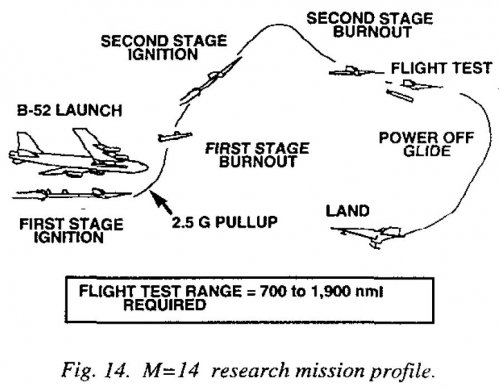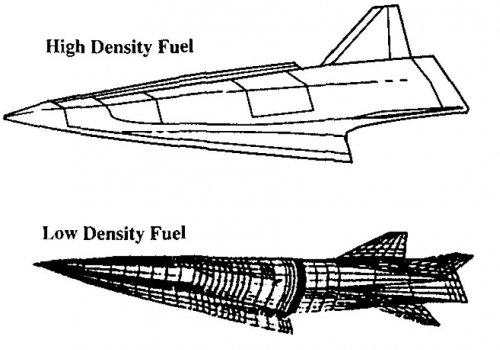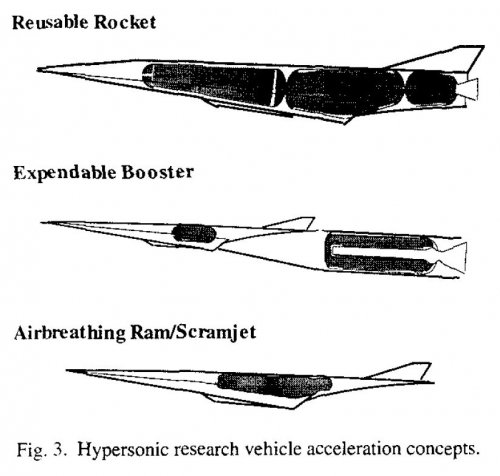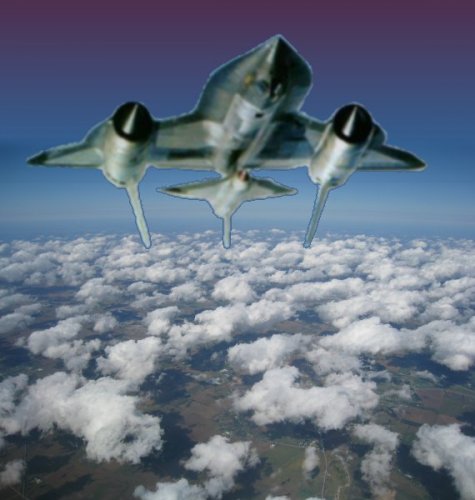- Joined
- 1 April 2006
- Messages
- 11,053
- Reaction score
- 8,511
Seems to be Rockwell International's very own HALO study. Interesting how vehicle shape would be close to factual RI X-30 NASP proposal.
"...a concept for a
hypersonic research vehicle using waveriding
aerodynamics. Both hydrogen and hydrocarbon fuels are
considered. Tradeoffs are made on acceleration
approaches and launch concepts.
This study resulted in a hypersonic research vehicle
(HRV) concept with the capability of hypersonic flight
testing up to Mach 14. This vehicle, air launched at Mach
3 from a NASA SR-71, provides hypersonic testing up to
Mach 10. Air launched from the NB-52 at Mach 0.8 with
an external booster, the same vehicle can be tested up to
Mach 14. The HRV can be powered with either
hydrocarbon or hydrogen scramjets.
The HRV provides a near-term approach for obtaining
hypersonic flight data and testing advanced systems under
real flight conditions"
"...a concept for a
hypersonic research vehicle using waveriding
aerodynamics. Both hydrogen and hydrocarbon fuels are
considered. Tradeoffs are made on acceleration
approaches and launch concepts.
This study resulted in a hypersonic research vehicle
(HRV) concept with the capability of hypersonic flight
testing up to Mach 14. This vehicle, air launched at Mach
3 from a NASA SR-71, provides hypersonic testing up to
Mach 10. Air launched from the NB-52 at Mach 0.8 with
an external booster, the same vehicle can be tested up to
Mach 14. The HRV can be powered with either
hydrocarbon or hydrogen scramjets.
The HRV provides a near-term approach for obtaining
hypersonic flight data and testing advanced systems under
real flight conditions"
Attachments
-
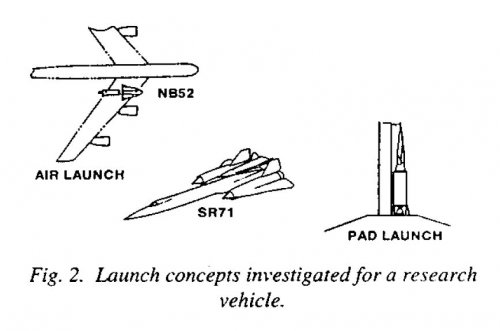 RI_HRV_1993_01.jpg39.1 KB · Views: 215
RI_HRV_1993_01.jpg39.1 KB · Views: 215 -
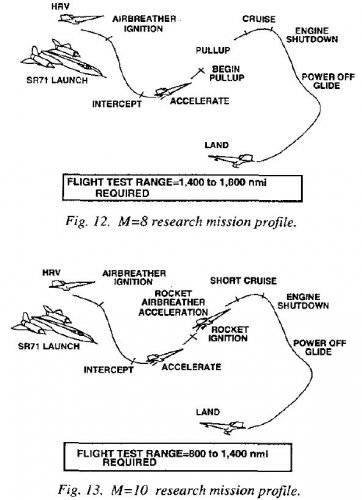 RI_HRV_1993_08.jpg71 KB · Views: 125
RI_HRV_1993_08.jpg71 KB · Views: 125 -
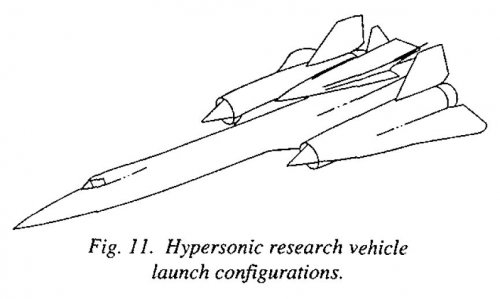 RI_HRV_1993_07.jpg40.2 KB · Views: 128
RI_HRV_1993_07.jpg40.2 KB · Views: 128 -
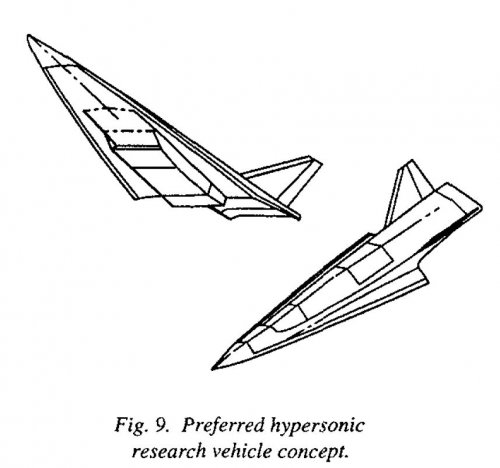 RI_HRV_1993_06.jpg60.1 KB · Views: 143
RI_HRV_1993_06.jpg60.1 KB · Views: 143 -
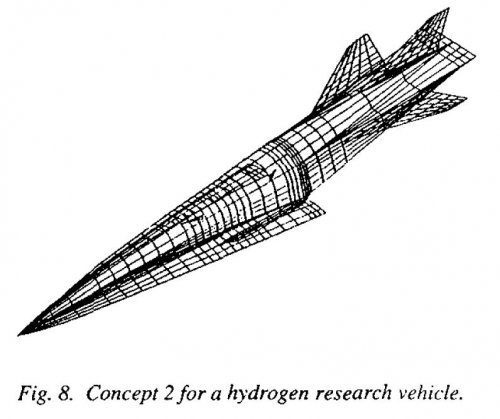 RI_HRV_1993_05.jpg63.4 KB · Views: 224
RI_HRV_1993_05.jpg63.4 KB · Views: 224 -
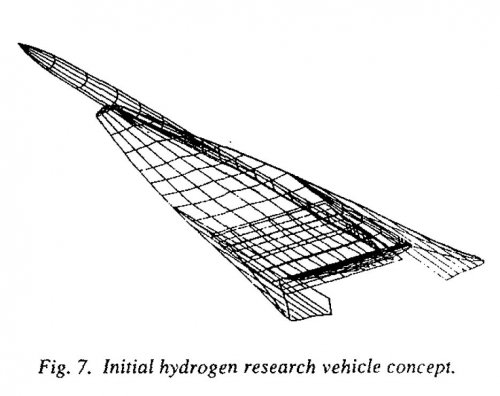 RI_HRV_1993_04.jpg76 KB · Views: 219
RI_HRV_1993_04.jpg76 KB · Views: 219 -
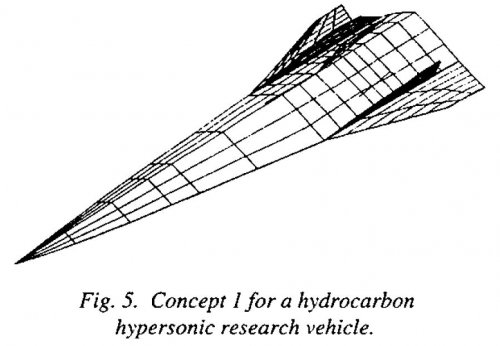 RI_HRV_1993_03.jpg65.2 KB · Views: 213
RI_HRV_1993_03.jpg65.2 KB · Views: 213 -
 RI_HRV_1993_02_earlyconfig.jpg55.5 KB · Views: 195
RI_HRV_1993_02_earlyconfig.jpg55.5 KB · Views: 195

